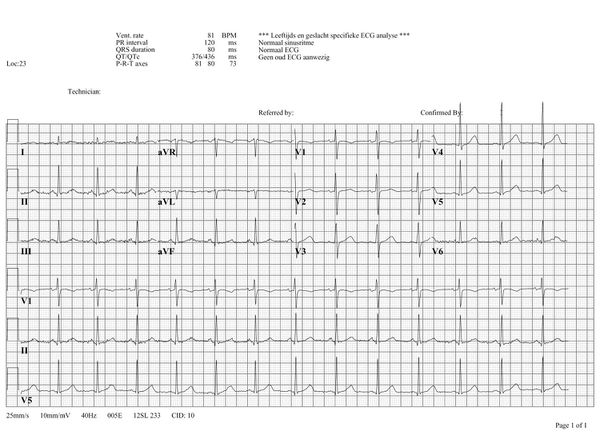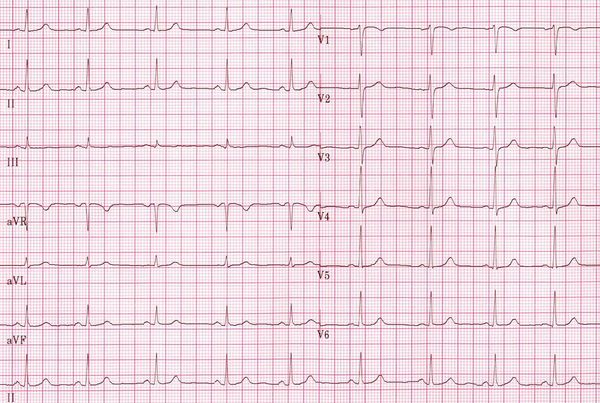P Wave Morphology: Difference between revisions
Jump to navigation
Jump to search
mNo edit summary |
No edit summary |
||
| Line 19: | Line 19: | ||
===The normal P wave=== | ===The normal P wave=== | ||
[[Image:normalSR.jpg|thumb|Normal sinus rhythm with a positive p wave in leads I, II en AVF and a biphasic p wave in V1.]] | [[Image:normalSR.jpg|thumb|Normal sinus rhythm with a positive p wave in leads I, II en AVF and a biphasic p wave in V1.]] | ||
[[Image:Normaal ecg.jpg|thumb| An example of normal sinus rhythm.]] | |||
[[Image:Nsr.jpg|thumb| Another example of normal sinus rhythm.]] | |||
Characteristics of a normal p wave:<cite>Spodick</cite> | Characteristics of a normal p wave:<cite>Spodick</cite> | ||
*The maximal height of the P wave is 2.5 mm in leads II and / or III | *The maximal height of the P wave is 2.5 mm in leads II and / or III | ||
Revision as of 02:30, 28 December 2007
| «Step 4:Heart axis | Step 6: QRS morphology» |
| Author(s) | J.S.S.G. de Jong, MD | |
| Moderator | J.S.S.G. de Jong, MD | |
| Supervisor | ||
| some notes about authorship | ||
The p wave morphology can reveal right or left atrial stretch.
The P-wave morphology is best determined in leads II and V1 during sinus rhythm.
The normal P wave



Characteristics of a normal p wave:Spodick
- The maximal height of the P wave is 2.5 mm in leads II and / or III
- The p wave is positive in II and AVF, and bifasic in V1
- The p wave duration is usually shorter than 0.12 seconds
Elevation or depression of the PTa segment (the part between the p wave and the beginning of the QRS complex) can result from Atrial infarction or pericarditis.
If the p-wave is enlarged, the atria are enlarged.
Referenties
<biblio>
- Spodick pmid=1575201
</biblio>